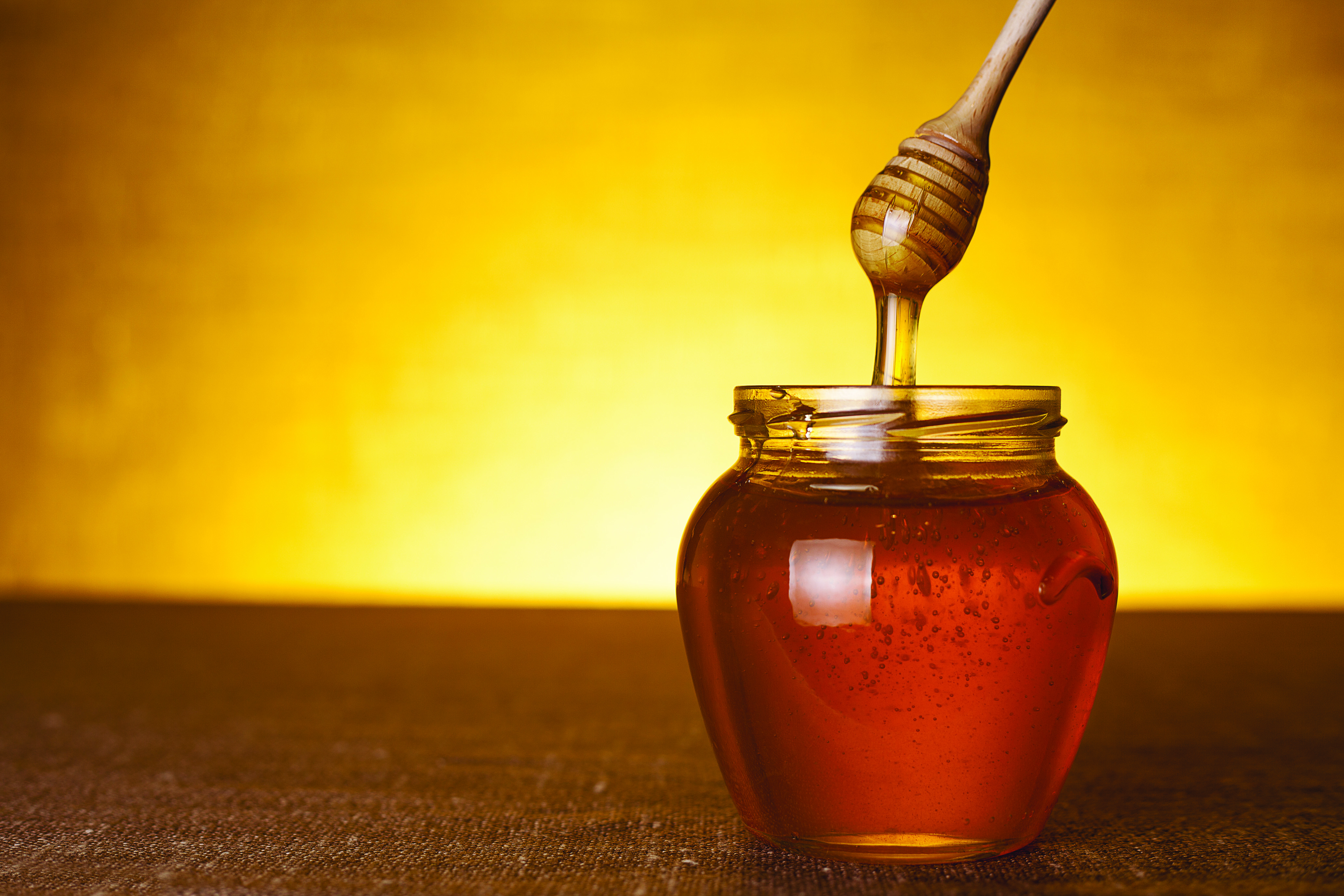
One is made by bees, the other by trees, but both are naturally golden, sweet and gooey. Honey was used as a sweetener in many ancient cultures. Honeybees came to the Americas with European colonists. English colonists also brought bees with them to New Zealand, Australia and Tasmania. Honeybees make wax and shape it into honeycombs. Hundreds of six-sided cells are created. Some cells hold bee eggs; other cells are used to store honey and pollen. The bees make honey from nectar and pollen. They use the honey for food in the winter. Many beekeepers wear protective clothing to protect from stings.
Beekeeping
Caves, rock cavities and hollow trees are ideal natural settings for honey bee hives. When people began keeping bees, they made artificial hives of clay, mud, straw, and dung. Wicker basket hives have been used for about 2,000 years. Wicker hives are called skeps. Today, artificial hives have wooden bars inside boxes. Modern hives allow the beekeeper to inspect the honeycomb for pests and diseases, and honey removal is much easier than with a skep.
Maple syrup
The sap of the maple tree can be collected only in early spring when temperatures fluctuate from freezing nights to warm days. This sugaring season lasts from three to six weeks. Holes are drilled into the trees and tapped with a spigot or spout. The sap runs through the tap into metal pails, glass jars or plastic bags. The collected sap is boiled in an evaporator and turned into syrup.
Making the grade
The colour of maple syrup is developed during processing. Late-season sap has less sugar and is boiled longer to concentrate it, resulting in a darker syrup. Maple syrup is generally classified by colour. Lighter syrups are delicately flavoured. Darker syrups are more strongly flavoured. Sap can be boiled beyond the syrup stage to make maple butter, maple taffy or maple sugar. —[email protected]